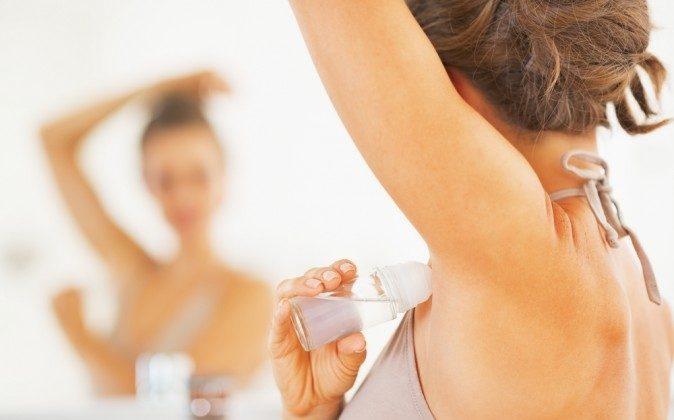A truly healthy body starts with healing from the inside out: filling the body with fresh, whole foods, pure water, and gettin’ Clean! As you shift your awareness of food and potential offenders in your diet, it’s also important to be aware that there are potentially harmful toxins in your surrounding environment — maybe even in your every day beauty, skin care, or household cleaning products. These environmental toxins can contribute greatly to our overall level of toxicity.
You may be thinking: ‘Say what?! The products I’m using on my skin or to clean the kitchen counter may be toxic?! Aren’t they approved by some standard or something?’
They may be, but here’s the deal:
Our skin is our largest organ. It is also highly permeable, so what you put on your skin or expose your skin to is absorbed into the body. In fact, one study has shown that we absorb up to 60% of the contaminants we’re exposed to in skin care products and tap water. Another study shows that sensitive areas like our faces, armpits and genitalia can absorb 2-6 times as much as other areas of the body like the torso.
These toxins can contribute to a wide array of health issues like gut health, allergies, even fertility.
So while you are looking for ways to Clean up your diet, start thinking about ways you can Clean up your skin care and household product arsenal.
I have become increasingly interested in natural skin care and household products as a result of some skin issues I’ve been having myself (oh, vanity). I’ve had a lot of fun exploring and experimenting, and my skin has definitely benefited. A good rule of thumb is: if you can eat it, you can wear it! Here are some easy and edible skin care changes I’ve made recently that I am loving:
- Coconut oil as a body moisturizer
- Honey as a facial cleanser
- Homemade deodorant made with coconut oil, baking soda, cornstarch, and tea tree oil
If I’m not making my own products I’m looking for ways to replace conventional skin care with more natural, less toxic alternatives. The EWG Skin Deep Database is an amazing resource to find the toxicity of products you may be using currently and to find healthier alternatives.
Here are some of the ingredients to look for and avoid:
1. Lead – Often listed as lead and lead acetate
2. Mercury – Often listed as mercury, thimerosol, mercuric oxide, phenyl mercuric acetate, and
phenyl mercuric benzoate.
3. Phthalates – often listed as phthalate, dibutyl phthalate and diethyl phthalate or simply
fragrance.
4. Hydroquinone – Often listed as hydroquinone.
5. Petroleum – Often listed as petroleum, petrolatum, petroleum distillates, mineral oil, mineral
spirits, unspecified waxes and paraffins.
6. Parabens – Often listed as methylparaben, ethylparaben, propylparaben, butylparaben,
isobutylparaben
7. Sodium Lauryl Sulfates – Often listed as sodium lauryl sulfate, sodium dodecyl sulfate,
sulfuric acid, monodecyl ester and monododecyl ester
8. Formaldehyde – Often listed as formaldehyde, formalin, formic aldehyde, Merthaldehyde,
methanal, methyl aldehyde, oxomethane, oxymethylene
9. Coal Tar – Often listed as coal, tar and coal tar solution.
10. Nanoparticles
What about household products? Where we live and work most likely expose us to a variety of toxins and chemicals. Over the coming weeks, begin to notice where and when you are exposed to some of the most common daily toxins. Avoid what you can and replace what you are able to. The most common include car exhaust, gardening and lawn chemicals, air-conditioning systems (use HEPA filters), dry-cleaning products, chlorine in swimming pools and showers, mattresses containing fire retardents, lead paint, cleaning products, aluminum or teflon pots and pans, and cell phones.
Here are some ideas to reduce exposure to toxins around the house:
• Replace chemical household cleaners with eco-friendly versions or homemade versions. White vinegar, baking soda, hydrogen peroxide, borax, lemon juice and salt make very effective cleansers with less cost and less toxicity (win!).
• Consider a water or air filtration system
• Donʼt microwave your food
• Minimize plastics – food storage, water bottles
Have fun exploring new avenues in skin care and household products. Let us know how it goes! Remember, just like making changes in your diet, making changes to products you use every day is a process. It all starts with awareness, so keep on learning and becoming more aware of simple changes that you can make over time that will help keep you Clean in the long run.
This article was originally published on blog.cleanprogram.com
*Image of “deodorant“ via Shutterstock


Friends Read Free